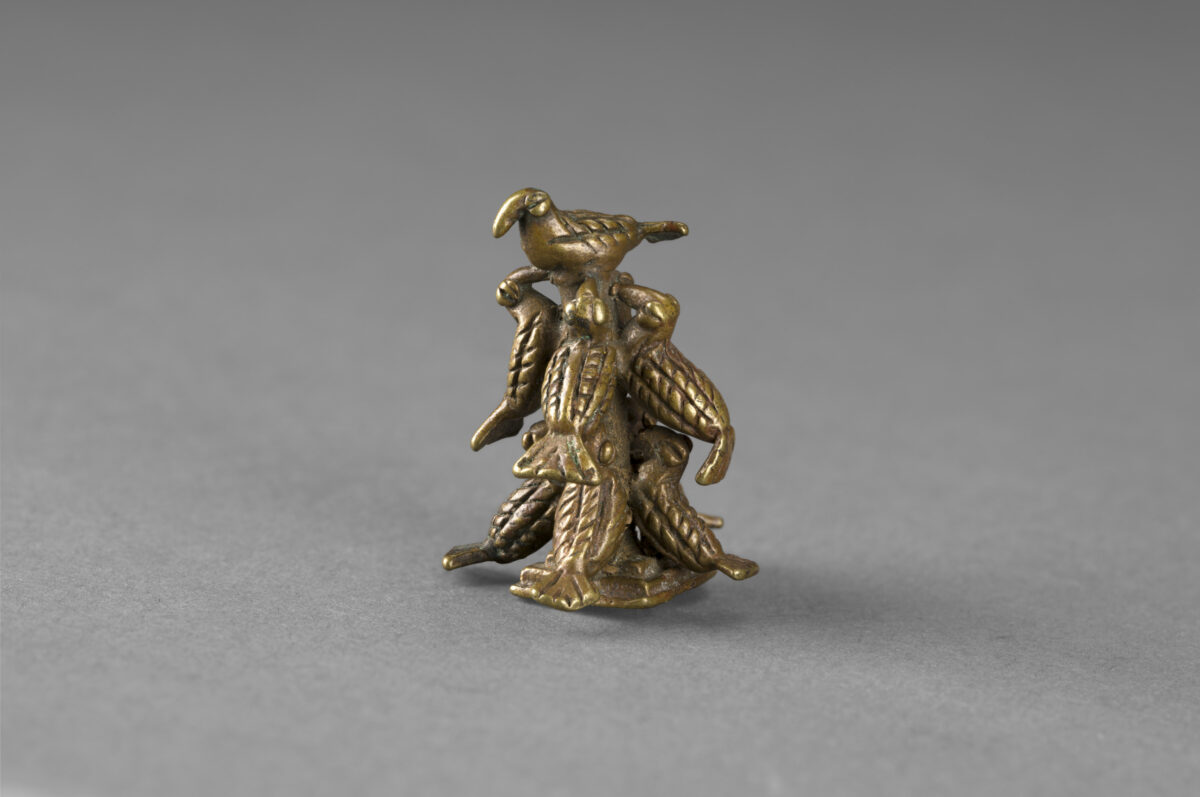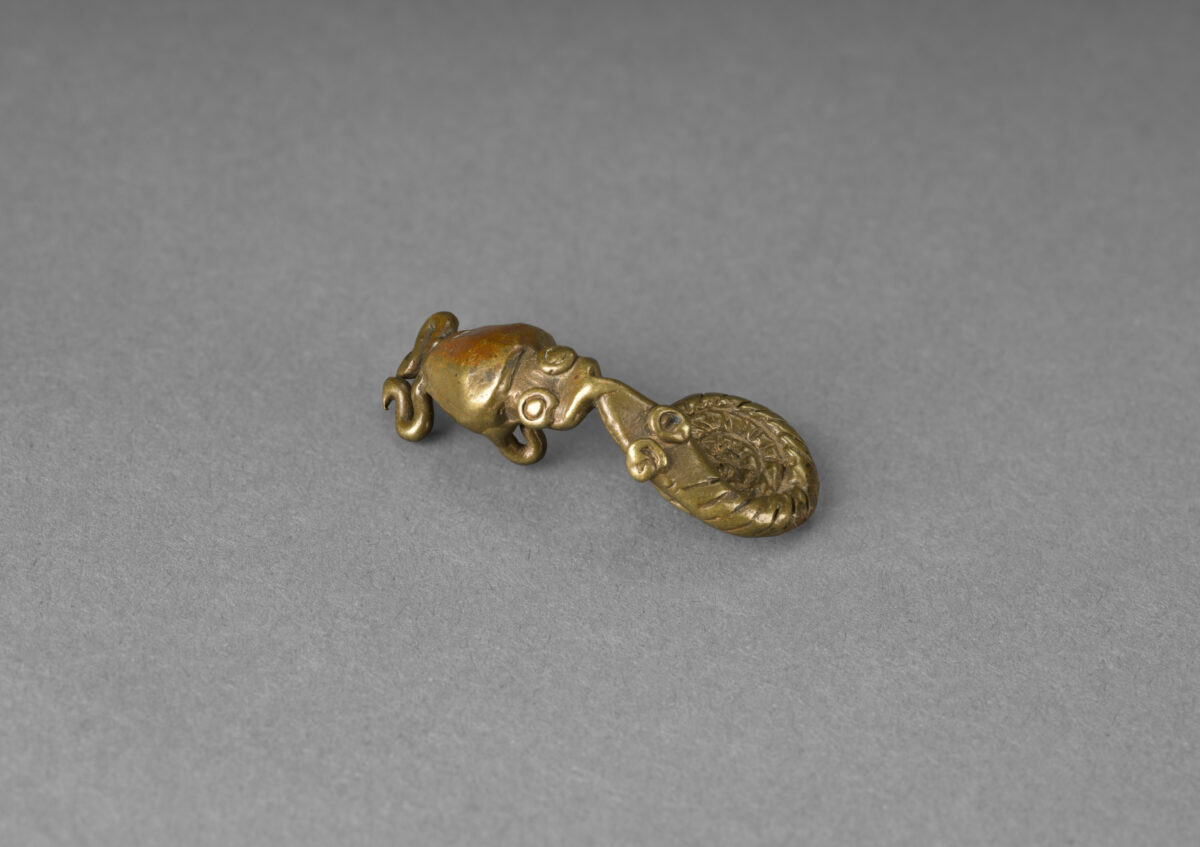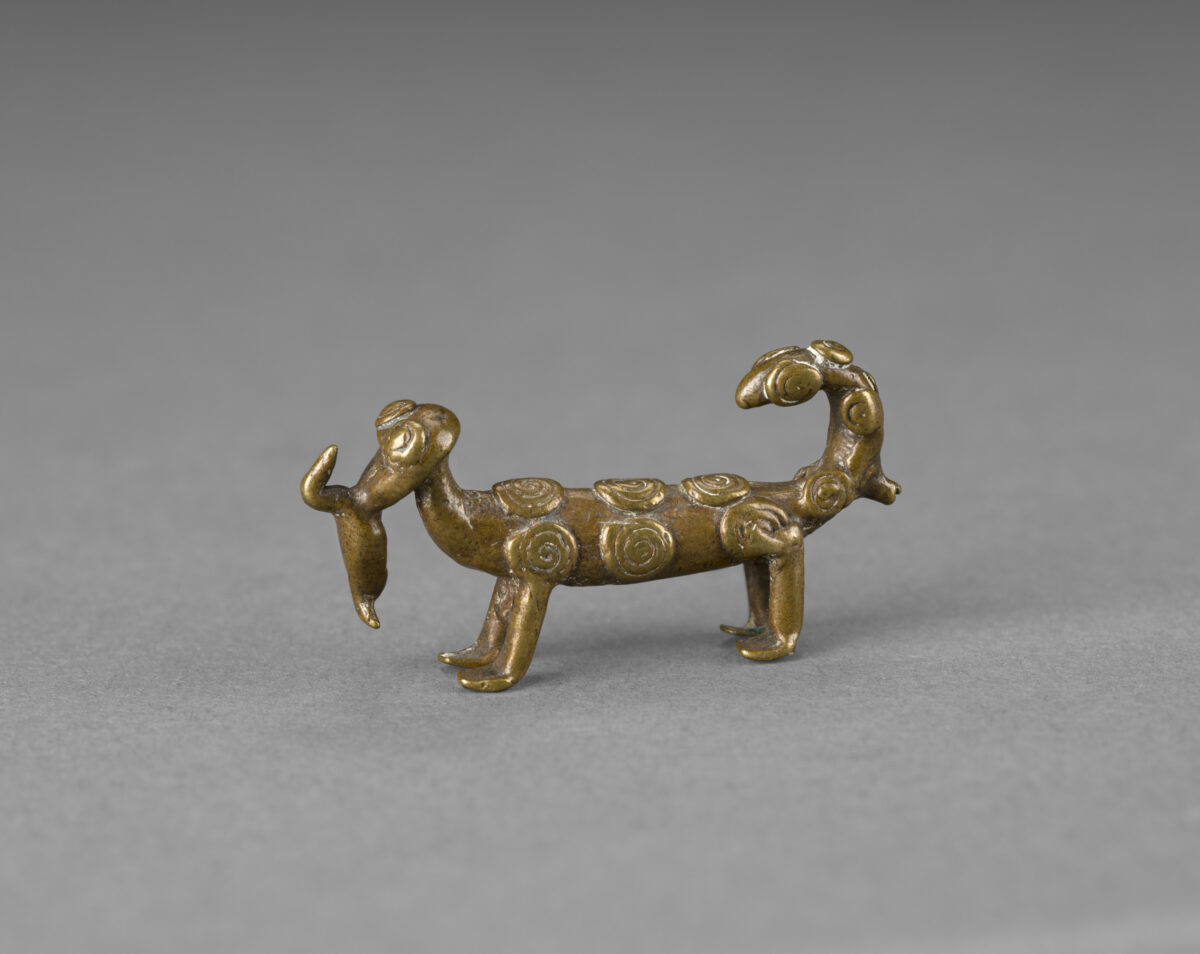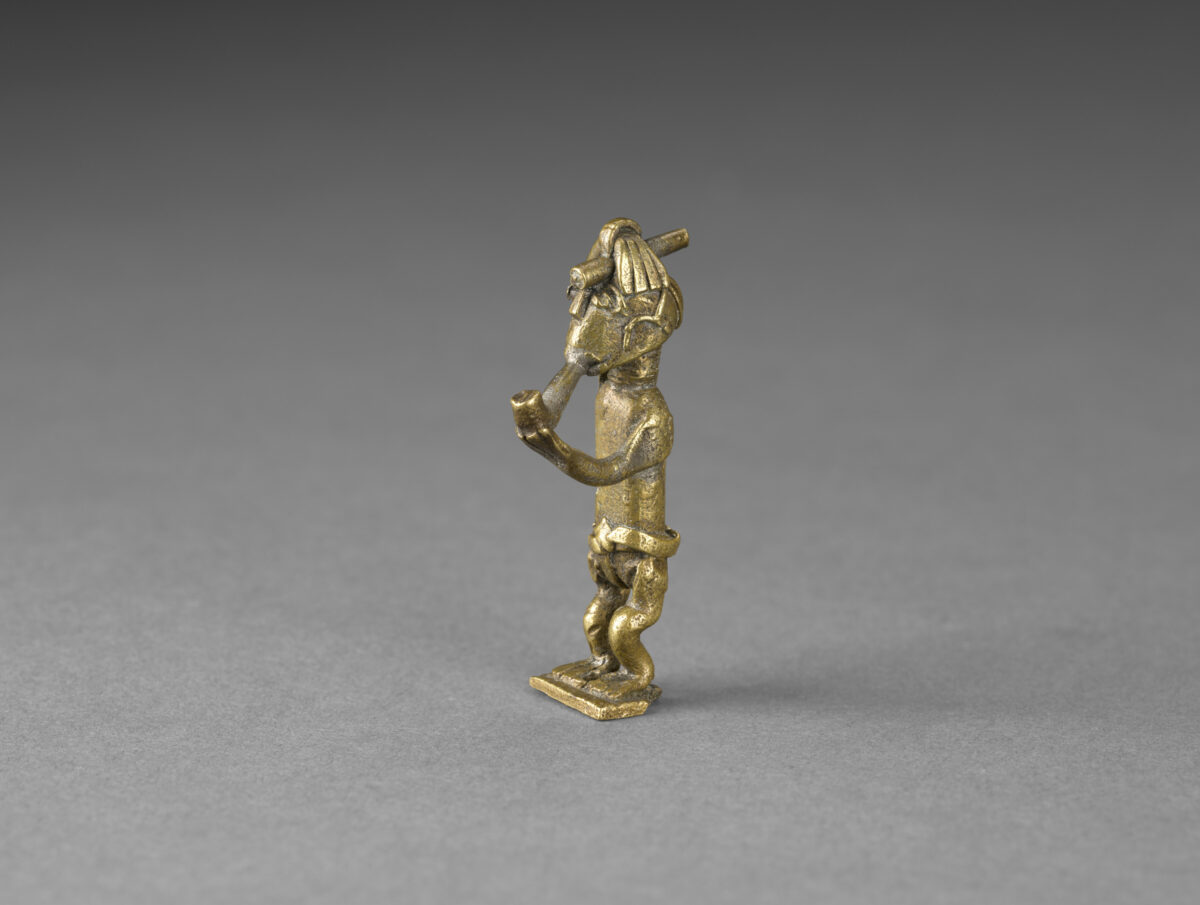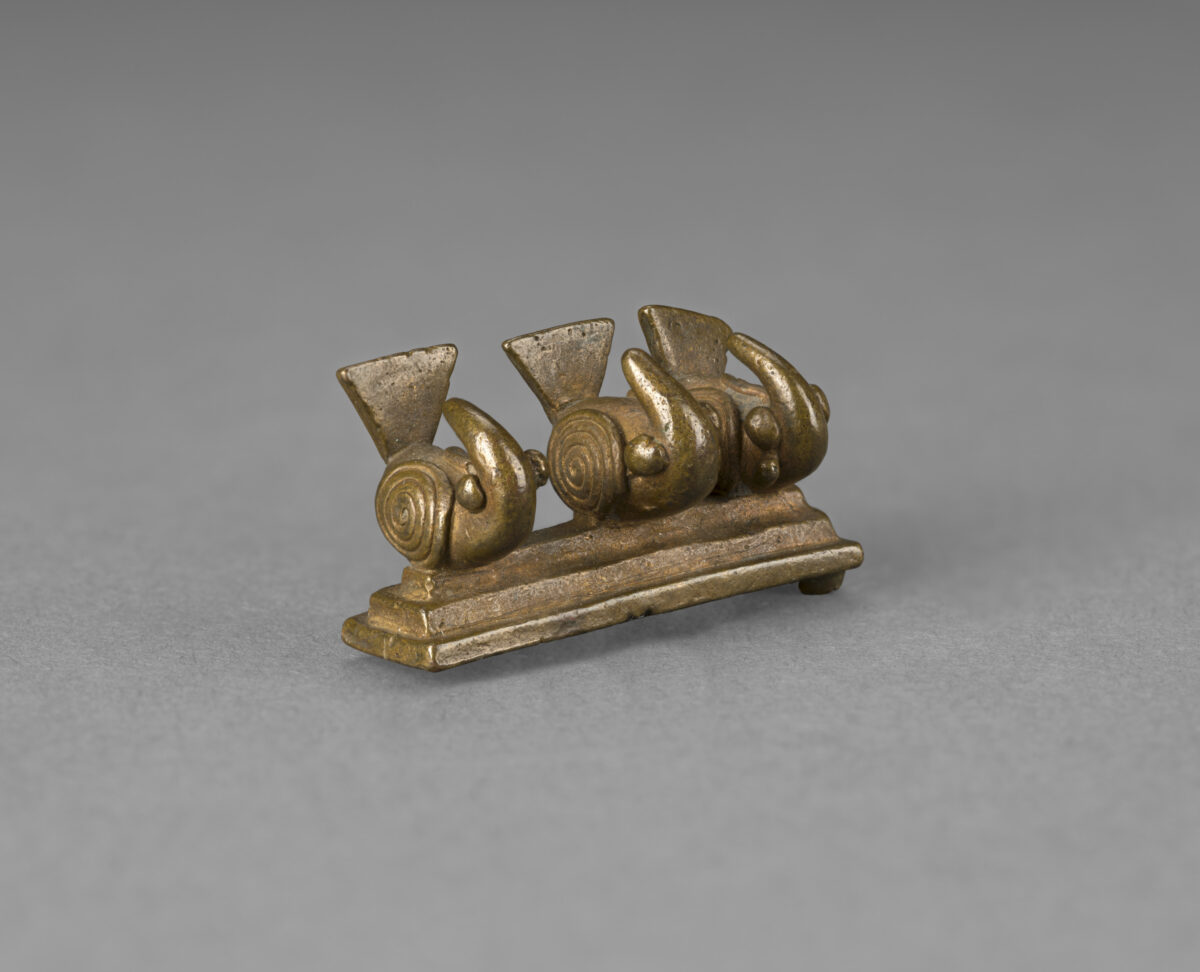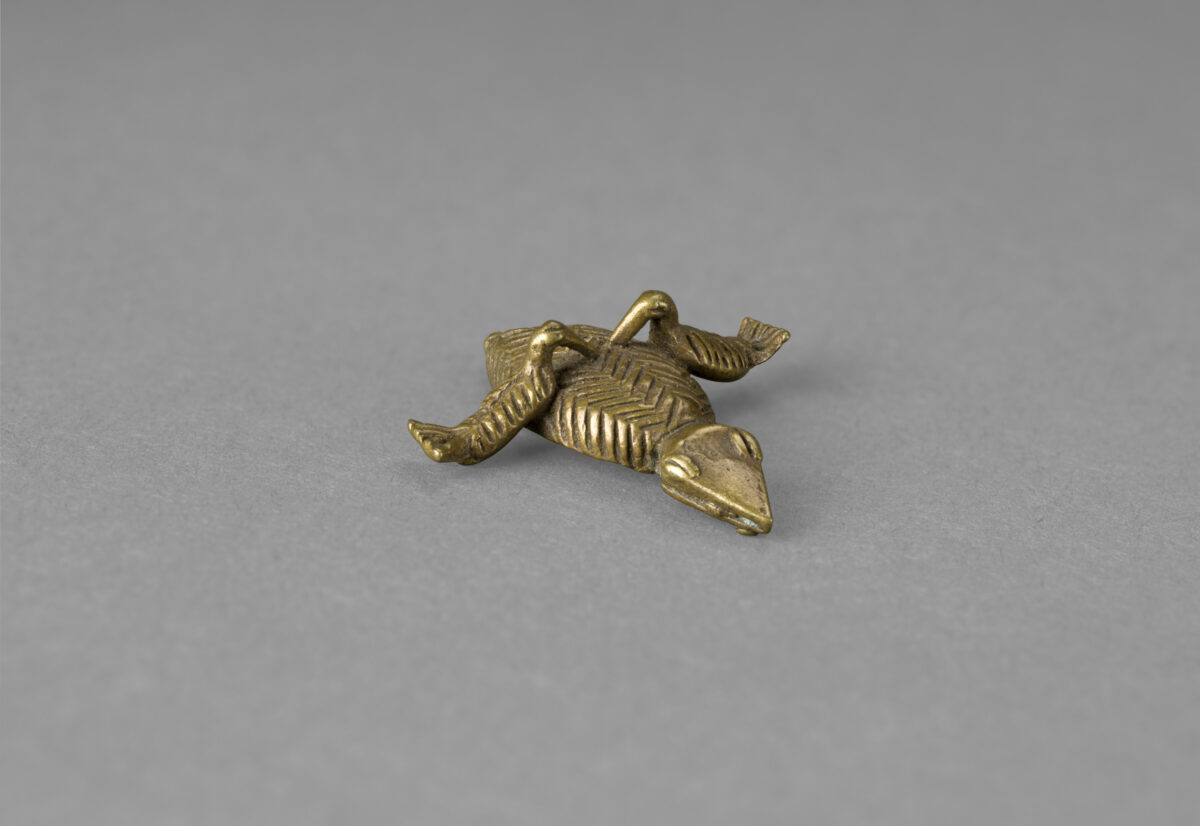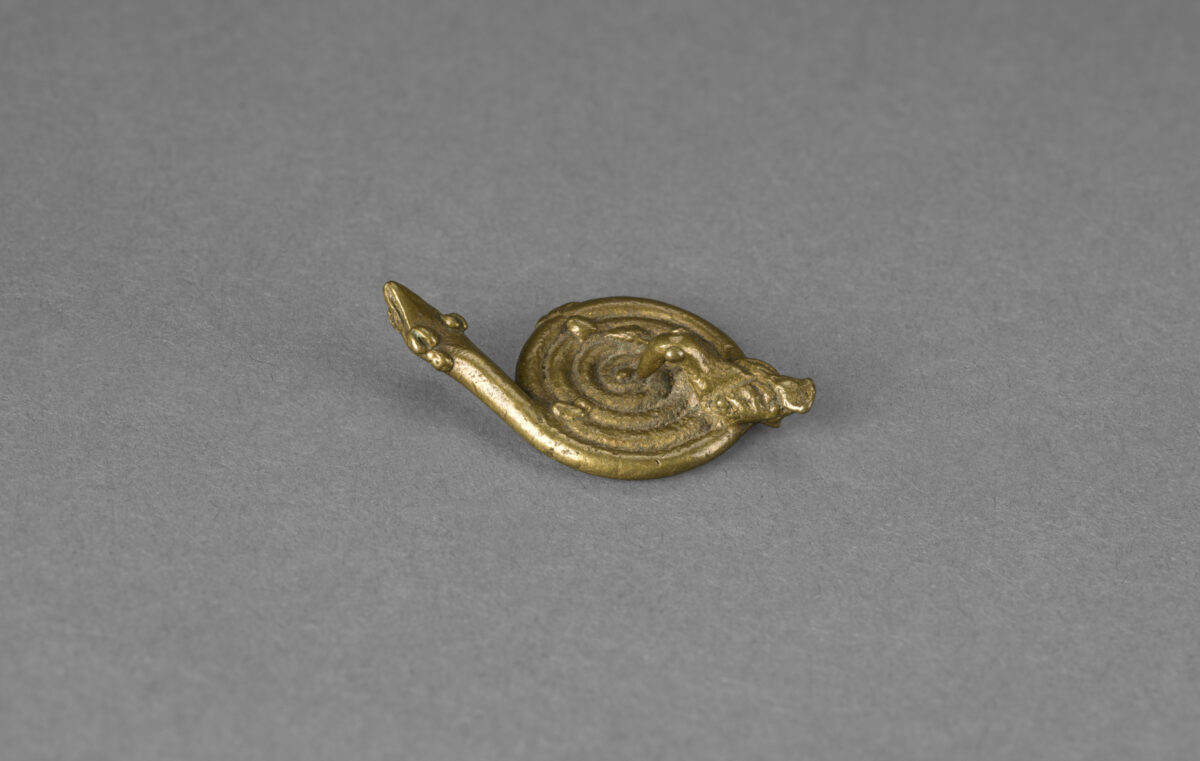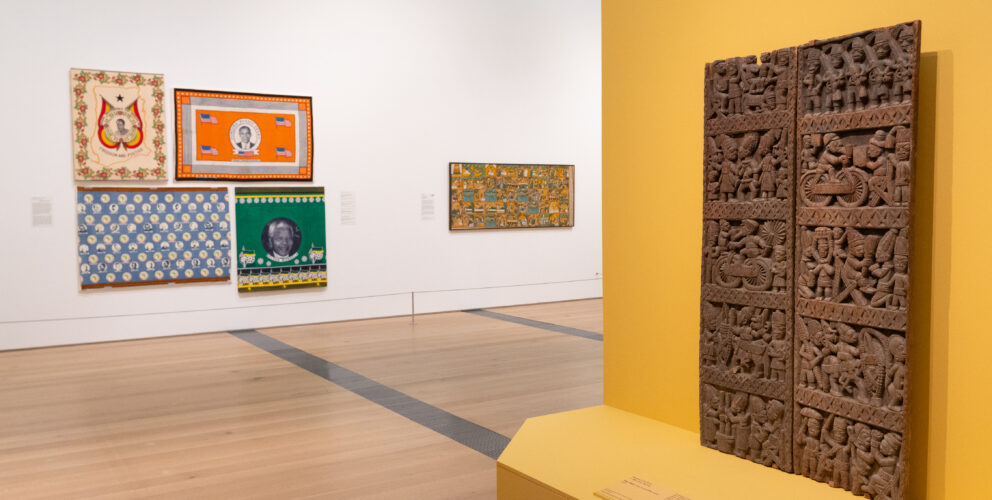Installation view of Narrative Wisdom and African Arts
Several counterweights on view in Narrative Wisdom and African Arts act as more than a measuring device. Representing various animals and objects, these works chronicle ever-evolving Akan proverbs.
Commonly referred to as gold weights, these objects are miniature, cast-brass sculptures that the precolonial Akan peoples of Ghana used to accurately measure gold dust.
-
Asante artist, Ghana; Animalistic Goldweight (Bird on a Tree or Post), late 18th century; brass; 1 3/8 x 1 1/8 inches; Saint Louis Art Museum, Gift of Morton D. May 617:1983
-
Asante artist, Ghana; Animalistic Goldweight (Serpent with Prey), late 19th century; brass; 1/2 x 1 3/4 inches; Saint Louis Art Museum, Gift of Morton D. May 578:1983
-
Asante artist, Ghana; Standing Quadruped, late 18th–early 19th century; brass, cire perdue; ex. spike: 1 x 1 15/16 inches; Saint Louis Art Museum, Gift of Mr. and Mrs. Alvin S. Novack 48:1957
-
Asante artist, Ghana; Standing Man, late 18th–early 19th century; brass, cire perdue; 3 1/8 x 7 x 1 1/4 inches; Saint Louis Art Museum, Gift of Mr. and Mrs. Alvin S. Novack 50:1957
There are 18 counterweights on view in Narrative Wisdom and African Arts, portraying birds, crocodiles, scorpions, and more. Most of these objects are approximately one inch long and one inch wide. Each gold weight carries a deeper meaning that has been passed down by generations.
Many scholars study the link between visual and verbal forms, a methodology based on the assumption that “visual imagery can individually and severally encode messages,” Nii O. Quarcoopome wrote in the Narrative Wisdom and African Arts exhibition catalogue. Quarcoopome is the curator of African art and department head of Africa, Oceania, and Indigenous Americas at the Detroit Institute of Arts.
This effort of connecting pictorial forms to proverbs is described as the “verbal-visual nexus,” a term coined by art historians Herbert Cole and Doran Ross. Cole and Ross established it as an effective tool for interpreting Akan art.
Proverbs are pervasive in Akan culture, and most Akan peoples regard them as ancestral wisdoms. Proverbial knowledge is not restrictive by age, gender, or rank; its permeability in society is referenced in this Akan proverb: “Abofra hũ ne nsa hohoro a, na o ne mpanyiṅfo didi,” which translates to “When a child knows how to wash his hands thoroughly, he and his elders can partake of food together.”
The recontextualization of proverbs occurs regularly, from everyday conversations to philosophical discussions between government officials. Quarcoopome explains that “the verbal-visual nexus relies on the fundamental premise that most Akan people are sufficiently proficient at connecting spoken knowledge to specific visual symbols.

Asante artist, Ghana; Animalistic Goldweight (Scorpion), 19th century; brass; Saint Louis Art Museum, Gift of Morton D. May 579:1983

Asante artist, Ghana; Ritual Charm Goldweight (Double Knot Rope Coil), 19th century; cast brass; 1 5/8 x 3/8 inches; Saint Louis Art Museum, Gift of Morton D. May 727:1983
As an important facet of Akan society, proverbs are referenced frequently in visual arts, and nowhere are they more fundamentally important than in counterweights—as discussed in the catalogue. The scorpion counterweight, pictured above and on view in the exhibition exemplifies the proverb “Ana ka wo yayaya, a woku no yayaya,” meaning “When the scorpion stings you mercilessly, you must kill it in the same spirit.”
Some counterweights are literal depictions of objects, like the knot shown above. It portrays the proverb that translates to “The knot of wisdom, a fool cannot untie it; it takes a wise man” in English.
-
Baule artist, Ghana; Animalistic Goldweight (Birds in groups), 1600–1720; brass; 1 9/16 inches; Saint Louis Art Museum, Gift of Morton D. May 764:1983
-
Asante artist, Ghana; Animalistic Goldweight (Bird with Lizard), 1600–1720; brass; Saint Louis Art Museum, Gift of Morton D. May 621:1983
-
Asante artist, Ghana; Animalistic Goldweight (Serpent with Bird), 19th century; brass; 3/4 x 1 7/16 inches; Saint Louis Art Museum, Gift of Morton D. May 573:1983
Counterweights that illustrate animals interacting with each other often represent more complex narratives. For example, the counterweight pictured above showcases three identical birds on an elongated step pyramid, looking over their backs, referring to the proverb “Anoma ne nua ne nea goie no da.” This proverb, reminiscent of the phrase “Birds of a feather flock together” in English, alludes to class consciousness and the importance of collective social ties.
The second counterweight pictured above shows two chickens bent over an animal with a protective shell covering its back. It embodies the proverb “Nnkoko ntokwa,” meaning “Conflicts are resolved through dialogue.”
The final counterweight shown above is a python preying on a toucan. A lesson on patience, the proverb’s English translation is “The python lies patiently on the ground yet captures a toucan.”
Gold weights in the Museum’s collection are also on view in Global Connections, a permanent installation on view in Gallery 237. The installation explores historical contexts of trade and commerce in precious materials that linked regions, including West Africa, to global networks during the 15th and 16th centuries.
This information was adapted from Nii O. Quarcoopome’s essay, “Speaking Art: Revisiting the Verbal-Visual Nexus in Akan and Ghanaian Art Studies,” which appears in the exhibition catalogue Narrative Wisdom and African Arts. The catalogue considers ways in which historical and contemporary African arts make visible narratives rooted in collective and individual memory and knowledge. It is available for purchase online and in Museum shops.
